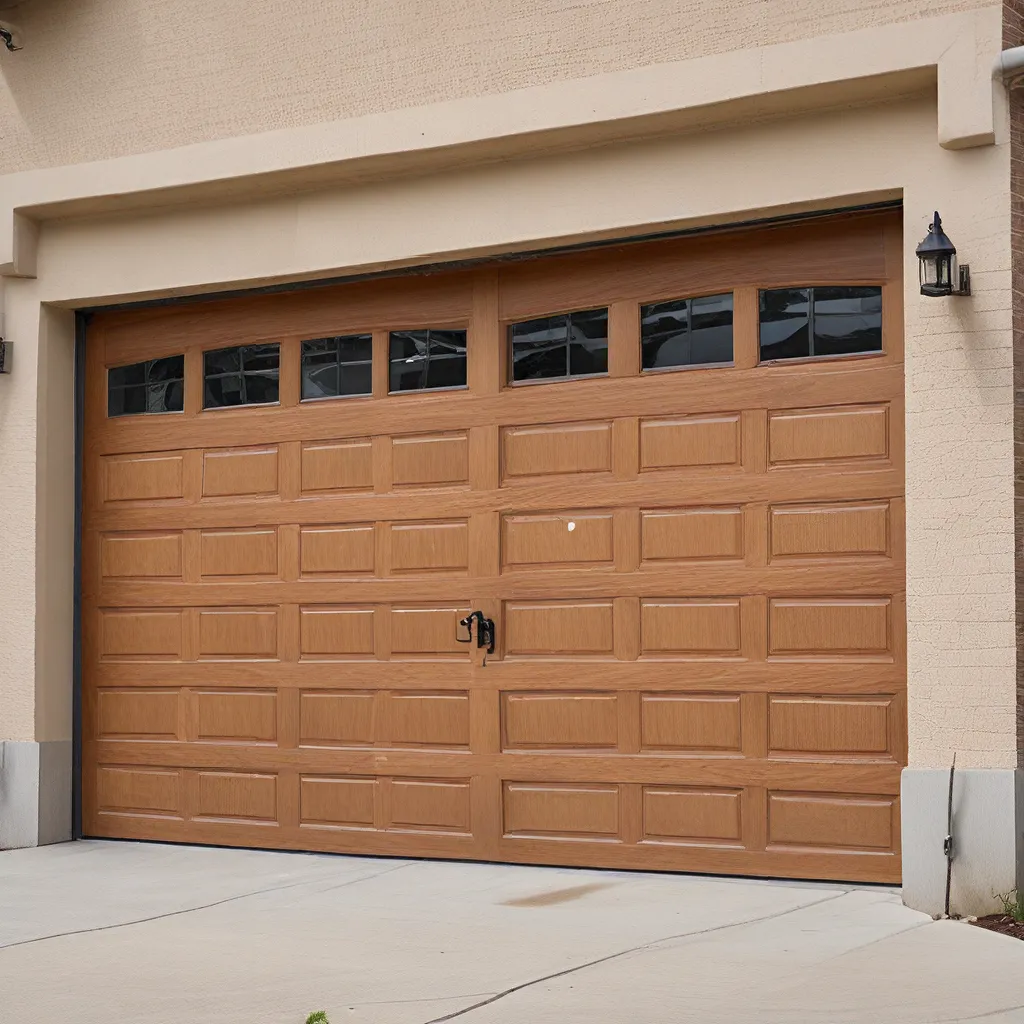
Understanding Garage Door Maintenance
Maintaining your garage door is crucial for ensuring smooth, quiet operation and extending its lifespan. One of the most important aspects of garage door maintenance is proper lubrication. By following best practices for lubricating your garage door components, you can keep it running like new for years to come.
Regular garage door lubrication is essential to prevent issues like sticking, grinding noises, and premature wear and tear. Over time, the metal parts of your garage door can become worn down, leading to increased friction and diminished performance. Regularly lubricating these components helps reduce the strain on your door’s motor and other moving parts, ultimately saving you money on costly repairs.
Types of Garage Door Lubrication
When it comes to garage door lubrication, there are two main types of lubricants you can use: synthetic lubricants and silicone-based lubricants. Both have their own advantages, and the choice between them largely depends on the specific needs of your garage door.
Clopay, one of the leading garage door manufacturers in North America, recommends using a synthetic lubricant like their Clopay Garage Door Pro Lube. These lubricants are designed to withstand the harsh environmental conditions that garage doors often face, providing long-lasting protection and smooth operation.
Silicone-based lubricants are another popular option for garage door maintenance. While Clopay doesn’t explicitly prohibit the use of silicone lubricants, they note that their recommended lubricant is not silicone-based. Silicone lubricants can be effective, but they may not offer the same level of protection and longevity as synthetic lubricants.
Garage Door Lubrication Best Practices
Proper garage door lubrication involves several key steps to ensure all the moving parts are well-maintained. Here’s a step-by-step guide to lubricating your garage door:
Lubricating Garage Door Hinges
The hinges on your garage door are crucial for its smooth operation. To lubricate the hinges, start by spraying grease at the edge of both sides of the bracket. Then, do the same for each of the individual hinges. Be sure to wipe off any accumulated dirt, dust, or debris on the roller wheels with a clean, damp rag.
Lubricating Garage Door Rollers
Your garage door may have nylon rollers or plastic rollers, and the lubrication process is the same for both. Start by spraying the bearing of the roller with a garage door lubricant. Then, manually operate the door to rotate the roller and ensure the lubricant is evenly distributed.
Lubricating Garage Door Tracks
Lubricating the tracks of your garage door is a bit different than the hinges and rollers. First, clean the tracks with a clean, damp rag to remove any dirt, dust, or debris that could interfere with the door’s movement. Then, using a putty knife, apply a lithium-based grease or silicone-based lubricant to the inside of the track. Be sure to apply it sparingly, as too much can gum up the works.
Lubricating the Garage Door Chain or Belt Drive
If your garage door opener has a chain or belt drive, it’s important to lubricate it to prevent rust and ensure smooth operation. Start by spraying a WD-40 Specialist White Lithium Grease on the chain or belt, then run the opener to distribute the lubricant evenly.
Lubricating Garage Door Springs
The springs on your garage door are under a lot of tension and can be prone to rusting if not properly maintained. To lubricate the springs, start by spraying them with a WD-40 Specialist White Lithium Grease, then use a putty knife to spread the grease evenly across the entire surface of the springs.
After completing these steps, open your garage door and observe how smoothly and quietly it moves. A well-lubricated garage door should operate with minimal noise and resistance, a testament to the effectiveness of your maintenance efforts.
Maintaining Garage Door Lubrication Over Time
Regular garage door lubrication should be performed at least twice a year, or more often if you notice any issues with the door’s performance. Paying attention to the signs of wear and tear, such as sticking, grinding noises, or increased resistance, can help you identify when it’s time to re-lubricate.
It’s important to note that while WD-40 is a great degreaser and rust-removing tool, it’s not the best choice for long-term garage door lubrication. WD-40 is designed to displace water, not to provide the kind of lasting lubrication your garage door needs. For that, you’ll want to use a dedicated garage door lubricant, such as the ones recommended by Clopay.
If, after following these lubrication best practices, your garage door is still not operating smoothly or quietly, it may be time to call in a professional. Issues like misaligned tracks, worn-out parts, or more complex problems may require the expertise of a qualified garage door technician to resolve.
Conclusion
Proper garage door lubrication is a crucial aspect of routine maintenance that can extend the life of your door and ensure smooth, quiet operation. By following the best practices outlined in this article, you can keep your garage door running like new for years to come, saving you time and money on costly repairs.
Remember, regular lubrication of the hinges, rollers, tracks, and other moving components is key to maintaining your garage door’s performance. And if you ever have any questions or concerns, don’t hesitate to reach out to a trusted garage door service provider for assistance.


